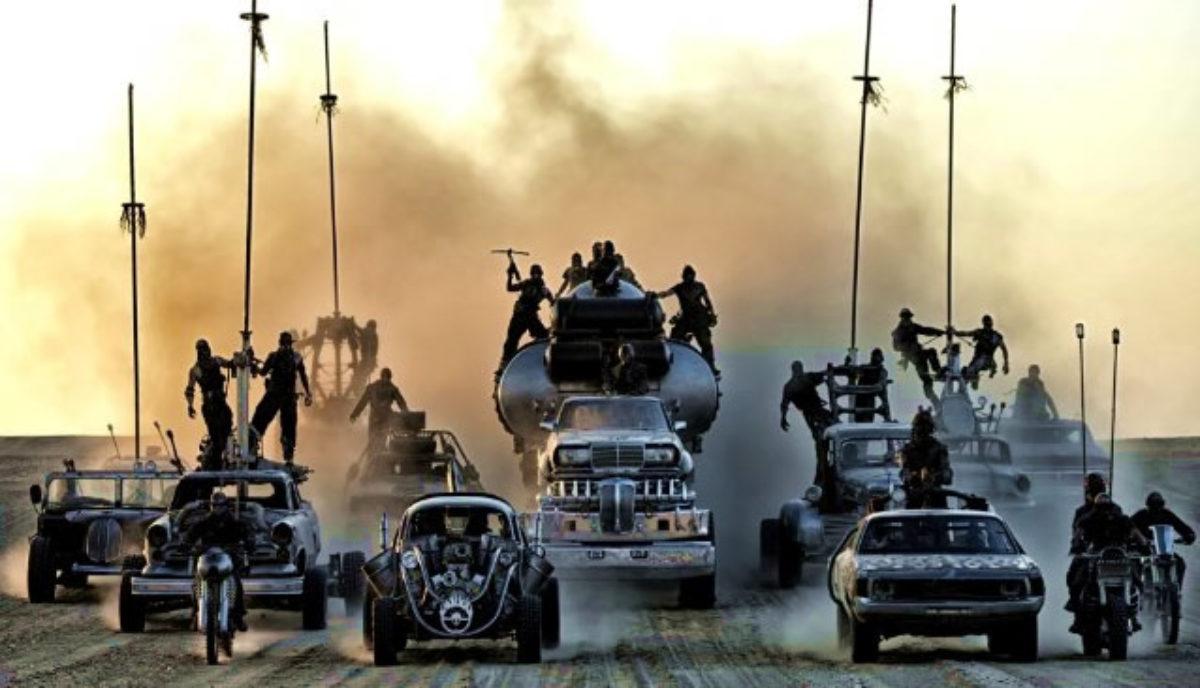In the realm of action cinema, few films have left as indelible a mark as “Mad Max: Fury Road.” Released in 2015, this high-octane spectacle directed by George Miller not only revitalized a beloved franchise but also redefined the conventions of the genre. Through its relentless pacing, groundbreaking practical effects, and innovative narrative structure, “Fury Road” challenged the status quo and set a new benchmark for filmmakers worldwide. This article delves into the myriad ways in which “Mad Max: Fury Road” transformed the landscape of action cinema, examining its influence on subsequent productions and its lasting legacy in a rapidly evolving industry. By analyzing its impact, we gain insight into how this cinematic juggernaut reshaped audience expectations and inspired a new wave of creative storytelling in the action genre.
Impact on Visual Storytelling and Cinematography
In the realm of visual storytelling, Mad Max: Fury Road stands as a testament to the power of imagery in driving narrative. The film eschews traditional dialogue-heavy scenes, opting instead for a kinetic visual language that speaks volumes. Director George Miller’s use of vibrant colors, stark contrasts, and rapid editing creates a visceral experience that immerses the audience in its post-apocalyptic world. The film’s cinematography, spearheaded by John Seale, employs a “center framing” technique, ensuring that the action is always in focus, allowing viewers to absorb the chaos without disorientation. This approach has influenced a wave of filmmakers who now prioritize visual coherence and narrative clarity in action sequences.
Key elements that have impacted visual storytelling and cinematography include:
- Practical Effects: The film’s reliance on real stunts and minimal CGI has set a new benchmark for authenticity in action sequences.
- Color Palette: The bold use of color contrasts, such as the bright oranges of the desert against the cool blues of the night, has inspired a more daring approach to color grading in cinema.
- Editing Style: The rapid, rhythmic editing has encouraged filmmakers to consider pacing as a crucial element of storytelling.
By redefining these visual elements, Mad Max: Fury Road has not only set a new standard for action films but has also reinvigorated the art of visual storytelling in cinema at large.
Revolutionizing Practical Effects and Stunt Work
In a cinematic era dominated by CGI, Mad Max: Fury Road boldly redefined the possibilities of practical effects and stunt work, setting a new benchmark for the action genre. By relying heavily on real-world stunts and practical effects, director George Miller crafted a visceral, high-octane spectacle that was both authentic and exhilarating. The film’s commitment to tangible action sequences was not just a stylistic choice but a narrative one, immersing audiences in a world that felt dangerous and immediate.
- Real Stunts, Real Danger: The production involved over 150 vehicles and countless explosions, with actors and stunt performers executing breathtaking maneuvers in unforgiving desert landscapes.
- Innovative Camera Work: Cinematographer John Seale utilized cutting-edge rigs and techniques to capture the kinetic energy of the stunts, ensuring that the audience felt every jolt and crash.
- Minimal CGI: While digital effects were employed for safety and enhancement, the film’s reliance on practical effects lent it a raw authenticity rarely seen in contemporary blockbusters.
This dedication to practical effects not only enriched the film’s visual and narrative impact but also inspired a resurgence of interest in traditional stunt work across the industry. Filmmakers began to recognize the irreplaceable value of real-world action, prompting a shift in how action sequences are conceived and executed in modern cinema.

Influence on Character Development in Action Films
In “Mad Max: Fury Road,” character development transcends traditional dialogue-driven narratives and evolves into a visual symphony of actions and reactions. This film redefined how action films can depict character arcs through physicality and environment. Max Rockatansky, for instance, is initially portrayed as a solitary figure haunted by his past. His character development is illustrated not through verbose exposition, but through his interactions with Furiosa and the shared struggle for survival. This subtle yet profound evolution is a testament to the film’s innovative storytelling, emphasizing that character growth can be powerfully conveyed through the relentless momentum of the narrative.
The impact on character development in action films can be seen through the following elements:
- Minimalist Dialogue: The reliance on visual storytelling over dialogue shifts the focus to action and expression.
- Symbolic Environments: Characters are shaped by their harsh, unforgiving landscapes, reflecting internal struggles.
- Non-Linear Growth: Characters evolve in a non-traditional sense, where development is shown through their adaptability and resilience.
This approach has inspired filmmakers to explore more innovative ways of depicting character journeys, setting a new standard in the action genre.

Setting New Standards for Gender Representation in Cinema
In an industry often dominated by male-centric narratives, Mad Max: Fury Road has emerged as a pioneering force, reshaping how gender roles are portrayed in action cinema. The film introduces us to Imperator Furiosa, a character whose strength, leadership, and complexity rival that of her male counterpart, Max Rockatansky. This deliberate shift in focus not only challenges traditional gender dynamics but also opens up a dialogue on the importance of diverse representation. By placing a female character at the forefront of a high-octane action narrative, the film has set a new benchmark, demonstrating that compelling storytelling transcends gender stereotypes.
Several key aspects highlight this shift in representation:
- Character Depth: Furiosa’s backstory and motivations are intricately woven into the plot, offering a rich narrative arc that challenges the typical ‘damsel in distress’ trope.
- Collaborative Heroism: The partnership between Max and Furiosa emphasizes equality, portraying them as allies rather than competitors in their quest for survival.
- Empowerment of Secondary Characters: The film also elevates its supporting female characters, granting them agency and significant roles in the unfolding story.
By doing so, Mad Max: Fury Road has not only entertained audiences but also sparked critical discussions on the evolution of gender representation in modern cinema.
